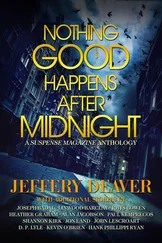“But the strangest part was he left a message. It was on a torn-out newspaper page. Left it in her underwear drawer. He used her lipstick to write on it. ‘Reckoning,’ and it was signed ‘the Locksmith.’”
“What was the newspaper?” Sachs asked.
“ Daily Herald ,” Sellitto said. “From February of this year.”
Rhyme didn’t know it. He paid scant attention to news unless a story shed light on a case he was investigating or contained information that might be useful in the future. He had little patience for most media.
The lieutenant continued, “A rag. Tabloid scandal sheet. The company that publishes it owns a TV station — same thing — and some shock-jock radio shows.”
“Shock jock.” Rhyme had not heard the term but when he realized “disc jockey,” he got it.
He said thoughtfully, “Okay, Lon. She’s upset. Who wouldn’t be? She caught a stalker, maybe. Or it was random. But there was no assault.”
Assault is awareness of physical contact of any kind. She was asleep.
“ Probably no battery,” Rhyme continued.
Nonconsensual contact.
“But even that would be hard to prove if there’s no evidence of touching. So you’ve got second-degree burglary.”
Breaking into a commercial building required several conditions to make the crime a burglary, such as the perp’s being armed with a deadly weapon or causing injury to someone. But no such requirements were necessary when the trespasser broke into someone’s personal dwelling. Simple breaking and entering made the Locksmith’s crime a felony.
But that hardly turned it into the crime of the century.
Sellitto caught the point. “Okay, okay, got it, Linc. He messed with her mind but considering what he could’ve done... So, you want to know what the hell’m I doing here, other than an excuse to have Thom’s baked goods. It’s a non-case, right? Well, there’s more.”
He dug out his phone and fiddled, then displayed the screen to Rhyme and Sachs. It was a picture of a social media post: the Herald page that Sellitto had referred to earlier, sitting in a dresser drawer, atop garments, the word “reckoning” and the nickname barely visible; the image was dark, shot without the flash, so as not to wake her, Rhyme supposed. Beneath the picture was typed Annabelle’s address and the words: “Who’ll be next?”
“He posted it somewhere underground but it went viral fast: Facebook and Twitter pages — newspapers, TV stations mostly. Word’s out now and reporters’re calling downtown. It’s holy hell. The brass can’t afford to flub a case that’s got a press-magnet of a perp like this guy. Especially now.”
Rhyme was all too aware of the scandal of recently botched investigations and trials in New York City.
Sellitto continued, “That’s who I was on the horn with when I got here.”
Rhyme had been wondering about the “Yessir.” He said, “So it’s about politics, Lon. Who has time for that? Anyway, I’m doing my part to take the trash out.” He nodded at the whiteboard of the Viktor Buryak investigation.
“I know you are. But I’m not through pitching my case. The respondings’s report ends up on Benny Morgenstern’s desk.”
Sachs said to Rhyme, “Gold shield, Major Cases. Been there a long time.”
Sellitto said, “Yeah. He’s like the wise old man of the squad. Yoda.”
Rhyme frowned. “I don’t know any brass named Yoda.”
Sellitto stared for a moment, then, apparently deciding his former partner was serious, said, “Just hear him out.”
Via Zoom, Rhyme — and the others in the parlor — were looking at a round man with a pale, freckled face.
Benny Morgenstern was in his fifties, not exactly the “old man” Sellitto had suggested. He wore a short-sleeved white shirt without a tie. He sat at a cluttered desk, filled with file folders and what appeared to be locks and keys, as well as metalworking tools.
A main bailiwick of the NYPD Major Cases squad was burglaries, robberies and hijackings — crimes that involved perps getting into places that were locked up for the very purpose of keeping them out.
“Captain Rhyme. You don’t remember. We met a while ago. The Whitestone Brinks case.”
He remembered the case — a four-million-dollar heist — though not the detective.
Rhyme’s response was a nod.
“Hi, Benny,” Sachs said.
“Amelia. Lon’s briefed you, I guess. But here’s the situation.”
Ah, “situation” — not “sit.” Rhyme cast a glance to Sellitto, who whispered, “Yeah, yeah, yeah,” in response.
“I had one of the respondings take a shot of Ms. Talese’s front door. Hold on.”
He shared a screen on Zoom, and Rhyme could see a knob with a keyhole in the center and two different deadbolts, one above the knob, one below.
Morgenstern continued, “Now, this isn’t going to mean a lot to you... not yet. Bear with me. In the knob, there’s a generic pin tumbler lock. Anybody could pick that with a basic set of tools and an hour to watch YouTube videos. But the deadbolts: Hendricks Model Forty-One on top. And Stahl-Groen Sixteen on the bottom. At lock-picking conventions, they’re competition models.”
“Lock-picking conventions?” Rhyme asked.
“Like hacker conventions. Oh, some professional locksmiths show up, but most of the action is with the bad boys and girls. The picking underworld. Open-society activists, WikiLeaks, that sort of crew. They have contests to see who can crack complicated locks before the clock runs out. Even some of the best pickers in the world can’t get through these babies in time. Some can’t even pick ’em at all. And your guy, the Locksmith, couldn’t stand in a New York apartment building for a half hour, working away. He’d have four, five minutes. Tops.” Morgenstern’s voice seemed laced with astonishment. Admiration too, perhaps.
“Now, it gets better. Or worse.” The detective swiped the page and a picture of a wall appeared, with what seemed to be an electronics panel.
“He gets through the deadbolts, and then has five seconds to disable her alarm. Which he does.”
Morgenstern continued, “Maybe he got her code. He could snatch her purse and it’s inside, but that’s unlikely. Let’s assume he hacked it out of service. Her model’s wireless. There’re three ways to take them out. All three involve using an RF — radio frequency — transmitter. One way is brute force, standing outside and transmitting every possible combination of four-digit pins. It takes about an hour and twenty minutes to get from 0000 to 9999. But, of course, that wouldn’t work in a Manhattan apartment. The second way is to hide a recorder nearby and capture the frequency of the disarm code. Then, when you go to break in, you play it back with the transmitter. But that too: hard to hide in an apartment building like hers.
“So, I think what the Locksmith did was the third way: he jammed the system. See, when you open the front door, a sensor mounted in the frame sends an activation transmission to the main box. That starts the five-second clock running; if you don’t enter the right pin in that time, the alarm goes off.
“But what you can do before you open the door is transmit a constant frequency that jams the link between the door sensor and the box. The ‘door open’ message never gets through to the panel. He probably used a Hack-InRF — that’s the most popular system.”
“And you can just buy them?” Rhyme asked.
“Yep. Or make one, if you’re electronically inclined.” Morgenstern stopped the screen share and his face appeared once more in a larger window. He must’ve had thirty locks on his desk. Was picking a hobby for him? Rhyme wondered.
Читать дальше
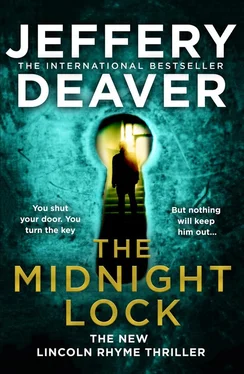
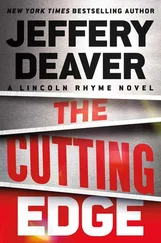





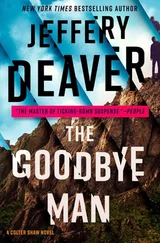
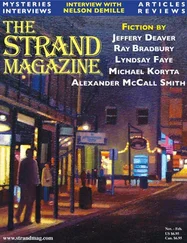
![Джеффри Дивер - Where the Evidence Lies [A Lincoln Rhyme Short Story]](/books/403782/dzheffri-diver-where-the-evidence-lies-a-lincoln-r-thumb.webp)


